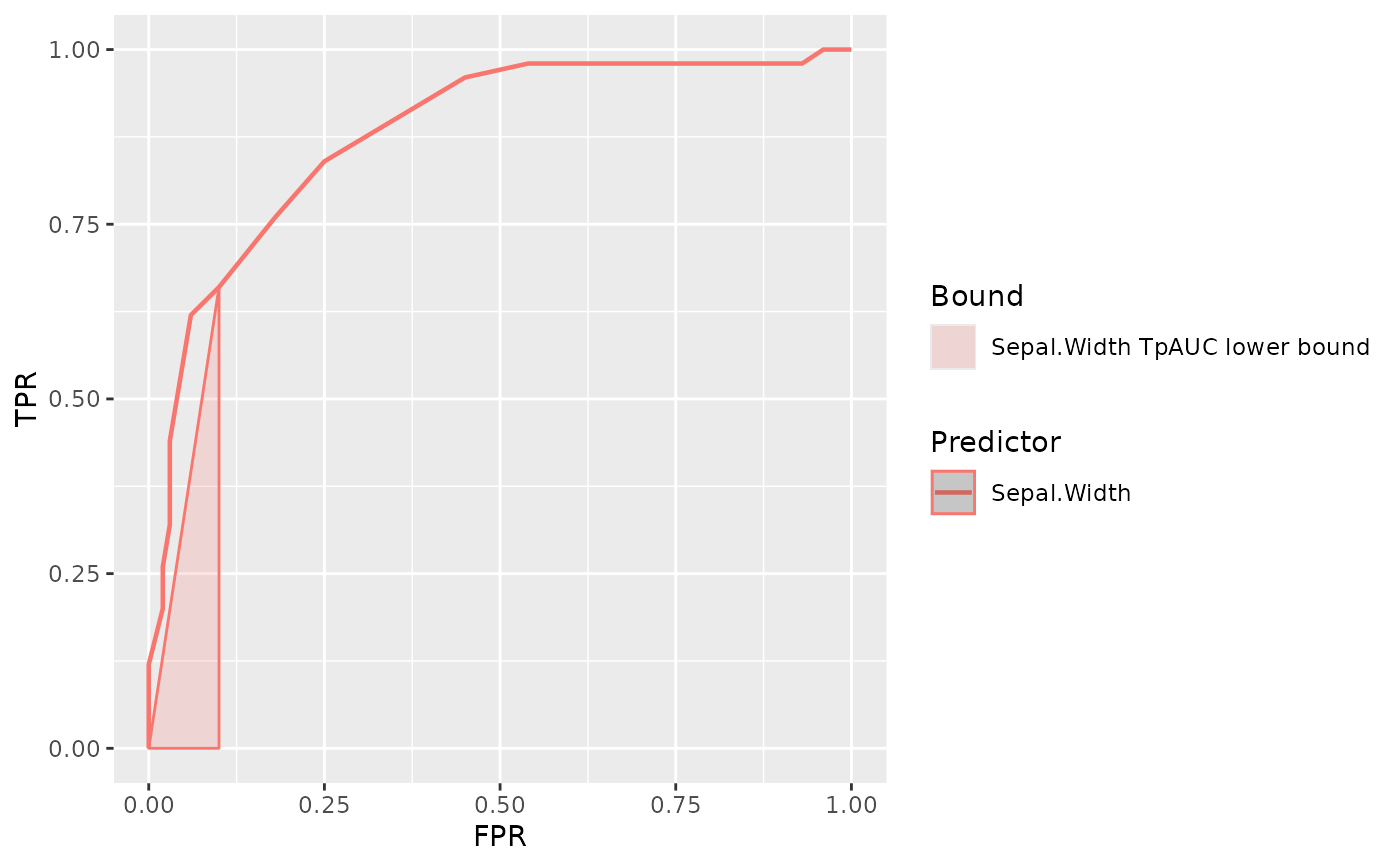Calculate and plot lower bound defined by TpAUC specificity index.
add_tpauc_lower_bound()provides a upper level function which automatically calculates curve shape and plots a lower bound that better fits it.
Additionally, several lower level functions are provided to plot specific lower bounds:
add_tpauc_concave_lower_bound(). Plot lower bound corresponding to a ROC curve with concave shape in selected region.add_tpauc_partially_proper_lower_bound. Plot lower bound corresponding to a ROC curve with partially proper (presence of some hook) in selected region.add_tpauc_under_chance_lower_bound. Plot lower bound corresponding to a ROC curve with a hook under chance line in selected region.
Usage
add_tpauc_concave_lower_bound(
data,
response = NULL,
predictor = NULL,
lower_threshold,
upper_threshold,
.condition = NULL,
.label = NULL
)
add_tpauc_partially_proper_lower_bound(
data,
response = NULL,
predictor = NULL,
lower_threshold,
upper_threshold,
.condition = NULL,
.label = NULL
)
add_tpauc_under_chance_lower_bound(
data,
response = NULL,
predictor = NULL,
lower_threshold,
upper_threshold,
.condition = NULL,
.label = NULL
)
add_tpauc_lower_bound(
data,
response = NULL,
predictor = NULL,
lower_threshold,
upper_threshold,
.condition = NULL,
.label = NULL
)Arguments
- data
A data.frame or extension (e.g. a tibble) containing values for predictors and response variables.
- response
A data variable which must be a factor, integer or character vector representing the prediction outcome on each observation (Gold Standard).
If the variable presents more than two possible outcomes, classes or categories:
The outcome of interest (the one to be predicted) will remain distinct.
All other categories will be combined into a single category.
New combined category represents the "absence" of the condition to predict. See
.conditionfor more information.- predictor
A data variable which must be numeric, representing values of a classifier or predictor for each observation.
- lower_threshold, upper_threshold
Two numbers between 0 and 1, inclusive. These numbers represent lower and upper values of FPR region where to calculate and plot lower bound.
- .condition
A value from response that represents class, category or condition of interest which wants to be predicted.
If
NULL, condition of interest will be selected automatically depending onresponsetype.Once the class of interest is selected, rest of them will be collapsed in a common category, representing the "absence" of the condition to be predicted.
See
vignette("selecting-condition")for further information on how automatic selection is performed and details on selecting the condition of interest.- .label
A string representing the name used in labels.
If
NULL, variable name frompredictorwill be used as label.
Examples
plot_roc_curve(iris, response = Species, predictor = Sepal.Width) +
add_tpauc_lower_bound(
data = iris,
response = Species,
predictor = Sepal.Width,
upper_threshold = 0.1,
lower_threshold = 0
)
#> ℹ Lower 0 and upper 0.1 thresholds already included in points
#> • Skipping lower and upper threshold interpolation
#> ℹ Lower 0 and upper 0.1 thresholds already included in points
#> • Skipping lower and upper threshold interpolation
